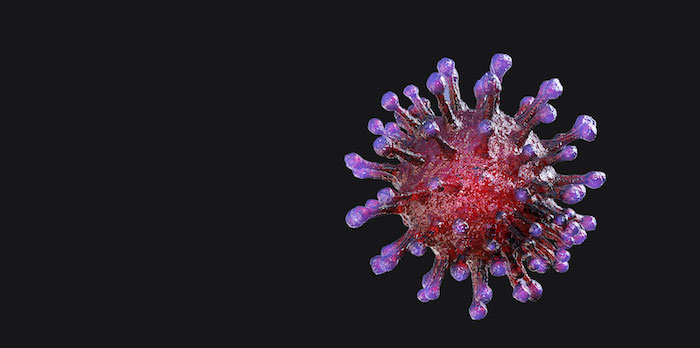ACE2 – A rational frontline therapy for COVID-19 summary
On Thursday March 12th, our ESR Connect studio was the epicenter of an important discussion on COVID-19 as we had the privilege to host professor Josef Penninger, world-leading geneticist and immunologist. Prof. Penninger delivered a compelling and important lecture on ACE2 and its role in the ongoing COVID-19 pandemic.
The lecture focused on the discovery and importance of angiotensin converting enzyme 2 (ACE2). Found in many organs, ACE2 positively affects blood pressure, kidney diseases, liver/lung fibrosis, and many other conditions. ACE creates angiotensin II which triggers angiotensin receptors AT1R and AT2R. This reaction can lead to lung edema and severe respiratory diseases, unless ACE2 is present. ACE2 molecules inactivate the bond between ACE and AngII and prevent the receptors from getting activated, thus protecting the organism from coming to harm.
As ACE2 was found to be strongly expressed in the lung, it is considered instrumental in preventing severe lung injuries. Penninger and his team proved the protective role of ACE2 in many experiments on genetically modified mice whose gene for the ACE2 protein was knocked out. These experiments on mouse models showed that adding rhACE2 to the knockout mice regulates lung injury and makes it less severe.
However, in 2003 ACE2 was identified as the critical receptor for the new SARS virus. The virus bonds the ACE2 and eliminates it, making the organism more susceptible to lung injuries, or significantly worsening any existing injuries. By preventing ACE2 to protect the lung against the acute respiratory distress syndrome (ARDS), SARS becomes a lethal virus.

Austrian Professor Dr Josef Penninger is one of the world’s leading geneticists and molecular immunologists.
Penninger and his team have been working on cloning the ACE2 and using it for lung therapy. They were able to develop a drug, APN01, which is a recombinant human ACE2 (rhACE2) that showed promise in both mouse and pig models, downregulating the lung injuries in both trials. While this proved effective, finding a selective AT1R inhibitor would be ideal as that would be more accurate than ACE2 in distinguishing between the bad AT1R and good AT2R.
In the case of COVID-19 outbreak, the situation is somewhat similar to the SARS epidemic. The virus binds with ACE2 in the lung, absorbs it and enters the cell, where it can fuse to the membrane and replicate itself. What is different from SARS, however, is that COVID-19 is much easier to transmit than SARS, spreading with an incredible speed. Furthermore, as ACE2 is expressed not just in the lung, but in many other organs, this means there are many targets of infection as the can bind to ACE2 not only to lung but multi-organ which is why a prompt action is necessary.
Currently, Penninger and his team at APEIRON Biologics are running the first human trial of their APN01 in China. They are hoping that injecting soluble rhACE2 will bind to the virus and soak it up, preventing it to bind directly to the immobile ACE2 expressed on the surface of the lung cells. The virus should then not be able to enter the cells in high number and induce lung injury. Penninger points out that in vitro experiments had indicated that this mechanism should work, but the drug must be carefully tested as in vivo mechanisms are often much more unpredictable than laboratory experiments. Asked about the vaccine development, Prof Penninger explained that the virus is heavily glycosylated, i.e., its surface is covered in sugar, and in order to develop the vaccine, we need to know where the sugars are and which point of the virus it needs to attack.
If you want to learn more about ACE2 and Josef Penninger’s work, you can watch the entire lecture on YouTube for free.
Bibliography:
- Imai et al (2008) Identification of Oxidative Stress and Toll-like Receptor 4 Signaling as a Key Pathway of Acute Lung Injury
- Imai et al (2005) Angiotensin-converting enzyme 2 protects from severe acute lung failure
- Hashimoto et al (2012) ACE2 links amino acid malnutrition to microbial ecology and intestinal inflammation
- Zhou et al (2020) A pneumonia outbreak associated with a new coronavirus of probable bat origin
- Kuba et al (2005) A crucial role of angiotensin converting enzyme 2 (ACE2) in SARS coronavirus–induced lung injury
- Wrapp et al (2020) Cryo-EM structure of the 2019-nCoV spike in the prefusion conformation
- Imai et al (2007) Angiotensin-converting enzyme 2 in acute respiratory distress syndrome
- Li et al (2003) Angiotensin-converting enzyme 2 is a functional receptor for the SARS coronavirus
- Treml et al (2010) Recombinant angiotensin-converting enzyme 2 improves pulmonary blood flow and oxygenation in lipopolysaccharide-induced lung injury in piglets
- Osterreicher et al (2009) Angiotensin‐converting‐enzyme 2 inhibits liver fibrosis in mice


